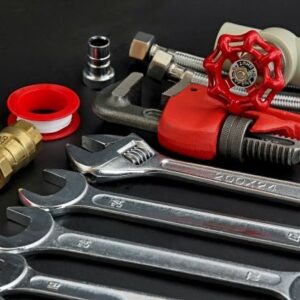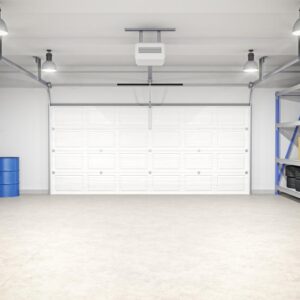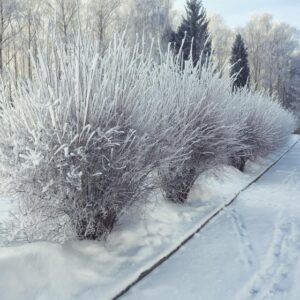Mulch is a vital tool in any home gardener’s shed. It retains moisture, insulates plant roots and reduces weed growth, all while enhancing the visual appeal of flowerbeds and other landscaping features. While many people rely on shredded wood or bark mulch for their garden and yards, there are a number of mulching alternatives you might not have considered using to pamper your plants and soil. Keep reading to find out more.
Alternative Mulch Types
Rock Mulch
Rock, gravel, pebbles and other stones can be applied to landscaping features such as flowerbeds to suppress weed growth and retain moisture. Rock is economical and seldom needs replacement. It also complements modern architectural features and more minimalist landscaping. In cooler climates, heat retained by rock mulch can often extend the growing season.
One small drawback of rock mulch is, because it doesn’t decompose, it doesn’t return as many nutrients to the soil as biodegradable mulches. This is easily remedied by periodically applying fertilizers, giving plants an extra nutritional boost.
Rubber Mulch
Rubber mulch is made up of 100% recycled rubber, usually reclaimed from tires. It offers a few advantages over organic mulches. It insulates soil from heat and cold, allowing soil temperatures a couple of degrees higher or lower than wood mulch provides. Because rubber is non-porous, water makes its way directly to the soil underneath without absorbing into the mulch. It also reduces fungus and unwanted plant growth, acting as a very good weed barrier.
It does have the same drawback as rock mulch; however, because it doesn’t decompose and return nutrients back into the soil. One other drawback is that some types of recycled rubber can leach small amounts of chemicals and minerals into the soil, which, in high concentrations, may harm some types of plants.
Ultimately, rubber mulch can be an effective and sustainable alternative to wood mulch because it cuts down on the use of trees and other organic material, recycles material that would end up in a landfill and lasts significantly longer than wood mulch, making it a viable alternative.
Alternative Organic Mulch
One of the biggest draws of organic mulches is they deteriorate and decompose naturally over time, returning nutrients to the soil and making it ideal for productive plant growth. A disadvantage is, because they do deteriorate, they need to be reapplied—usually each season. There are a number of organic substances outside of the typical wood that you can use as creative mulch alternatives.
Leaves
Shredded or mulched leaves from deciduous trees can make great mulch for both your garden beds and your lawn. Many mower models now have a mulching feature that allows you to cut grass and simultaneously mulch the clippings so the finely shredded pieces return to the yard, adding essential nutrients while eliminating the need for bagging the clippings. You can use this same feature to mulch fallen autumn leaves and leave them on the grass, or collect them in the mower’s catcher and then gather them in yard refuse bags to use later as mulch for beds.
Helpful Tip
Leaves must be mulched or otherwise shredded to leave them on your lawn. Don’t let them sit on your grass during the fall and winter seasons. Thick layers of leaves that aren’t collected or removed from the lawn can hinder new growth when the weather starts to warm again.
Grass Clippings
Clippings from your recent mowing can be used to mulch more than just the grass itself. They can be used for garden beds as well. They need to be prepared beforehand—you cannot dump your grass clippings on your flower beds and expect anything but problems. These clippings need to be dried out thoroughly or composted before use because a pile of freshly cut grass mats and starts to rot—creating potentially plant-damaging heat, making it less than ideal for mulching your garden beds. You can spread out piles of grass clippings to let them dry and fluff them periodically to cut down on matting. You can also mix the grass clippings with shredded leaves, other mulch or with compost to facilitate decomposition without putrefaction. Another advantage of using grass clippings for mulch is that it is cost-efficient and landfills aren’t filled with bags of clippings.
Helpful Tip
If you treat your lawn with chemicals, don’t use them as mulch in your flower or garden beds.
Pine Needles
Pine needle mulch, also known as “pine straw,” decomposes and adds nutrients to the soil just like other organic forms of mulch. For the best results, it must be correctly paired with particular plants. Pine needles are acidic and work best with plants that like acidic soil, such as holly, gardenias, roses, chrysanthemums, tomatoes, garlic and onions. Pine needles are easy to spread on the ground and easily allow water, oxygen and other nutrients into the soil, while insulating it from the cold. To reduce their acidity, dry them out before use.
One great way to gather pine needles for mulch is from your annual holiday tree. Don’t just throw it away; you can repurpose your holiday tree.
Cardboard and Newspaper
Cardboard and newspaper can be used in a similar fashion as landscaping fabric. They can act as a weed barrier and insulator underneath other types of mulch, or even on their own, if they are shredded. It is best to use them in conjunction with other types of mulch. By adding to commercial mulches, cardboard and newspaper can extend the coverage and save money. They are also biodegradable and deteriorate like other mulches. Because of this, cardboard and newspaper have an advantage over commercial landscaping fabric, because you won’t have to replace it from time to time like you may have to with landscaping fabric. Also, because they break down, they work with the mulch on top to return organic matter to the soil. Landscaping fabric, while good for keeping weeds out of beds, may also keep any nutritional benefits of decomposing mulch from reaching the soil.
Helpful Tips
There is some debate among gardening aficionados about whether colored ink from newspaper is hazardous to plants and soil. Sections of newspaper with only black ink are thought to be safe, so try to use these sections of the newspaper for your mulch.
Some cardboard boxes are treated with chemicals that make them more durable. If you are unsure if your cardboard is untreated, it is best that you don’t use it in your garden.
Hay/Straw
Hay or straw can be used as mulch because it can suppress weeds, retain moisture and release nutrients into the soil—though it needs to be applied thickly. It often works well when laid down first and then covered with another more aesthetically pleasing mulch, especially in front-yard flower beds where appearances are more of a priority. Straw mulch is especially useful when you need to cover large areas, such as lawns or larger gardens, because large amounts of it are relatively inexpensive and easy to spread around.
Helpful Tip
Do what you can to insure the straw you’re getting is as weed-free as possible or you may lose the weed-suppressing benefits of your straw mulch.
How to Apply Mulch
Step 1. Water the Soil
It is very important to water your soil prior to mulching. Dry soil and mulch combined can actually prevent water from soaking into the ground. Use a garden hose and allow the water to soak into the soil 6” to 8”.
Step 2. Remove Weeds
Remove existing weeds from the area you plan on mulching with a trowel, weeding tool or by hand. Be sure to get all of the plant, including the roots, out of the ground.
Step 3. Add Mulch
After deciding what type of mulch you want to use, layer it on your beds about 2″ to 4″ deep. It should be thick enough to block light and keep weeds from sprouting. Be careful to keep mulch away from the crown of plants, as it could potentially kill them.
Step 4. Replenish Mulch
Organic mulches break down steadily over time. Replenish when just a thin layer remains. By adding mulch, you are improving your soil and reducing the need to water and pull weeds. If you use rubber or stone mulch, just check its condition each season to see if it needs replenishing, replacement or rearrangement.
That’s it! Now you know all of the alternative mulching options available to you.
Project Shopping List
Here’s what you’ll need to complete this project successfully.
- Rock mulch
- Fertilizer
- Rubber mulch
- Garden hose
- Trowel
- Weeding tool












